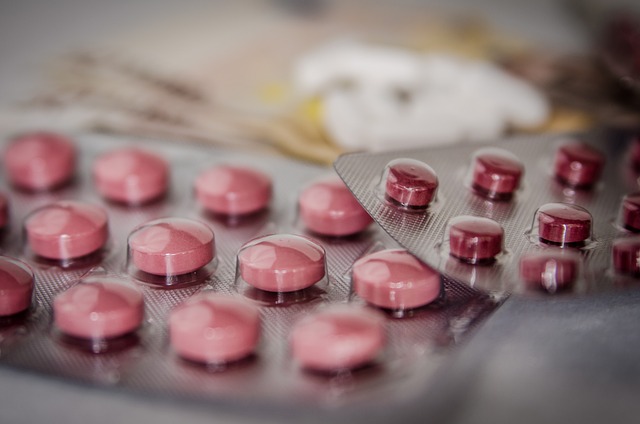GLP-1 receptor agonists (GLP-1 drugs) are a revolutionary class of medications that mimic the natural hormone glucagon-like peptide-1 (GLP-1) to manage type 2 diabetes effectively. They enhance insulin secretion, suppress glucagon release, and offer superior glycemic control with reduced side effects compared to traditional treatments. Additionally, GLP-1 drugs aid in weight reduction by increasing satiety and slowing digestion. With various mechanisms of action, they are available in short- and long-acting formulations. Beyond diabetes, these drugs show promise in cardiovascular health, obesity management, and reducing the risk of vascular complications. However, they may cause gastrointestinal disturbances that are often mild and transient. Patient education is crucial for optimizing outcomes, and ongoing research aims to expand their role in personalized medicine, revolutionizing diabetes and metabolic management.
“Discover the transformative power of GLP-1 receptor agonists—a class of cutting-edge diabetes treatments. This comprehensive guide delves into the intricate world of these innovative drugs, offering a detailed exploration of their mechanisms, therapeutic benefits, and administration. From understanding the role of GLP-1 in diabetes management to navigating potential side effects, this article equips readers with essential knowledge about GLP-1 drugs. Uncover the latest research trends and patient education strategies that enhance outcomes, shaping the future of diabetes treatment.”
Understanding GLP-1 Receptor Agonists: A Basic Overview

GLP-1 receptor agonists are a class of medications that mimic the effects of the natural hormone glucagon-like peptide-1 (GLP-1). These drugs play a significant role in managing blood sugar levels and have revolutionized diabetes treatment. By stimulating GLP-1 receptors, they enhance insulin secretion when blood glucose is high, while also suppressing glucagon release, which helps lower blood sugar levels.
This mechanism of action makes GLP-1 drugs particularly effective for people with type 2 diabetes. They are often prescribed as an oral medication or injection, offering a more convenient and potentially less invasive approach to glycemic control compared to traditional insulin therapy. Additionally, ongoing research explores their potential benefits in weight management and cardiovascular health, further expanding the scope of these educational resources on GLP-1 receptor agonists.
The Role of GLP-1 in Diabetes Management

Glucagon-like peptide-1 (GLP-1) receptor agonists are a class of medications that have revolutionized diabetes management, especially for people with type 2 diabetes. These drugs mimic the natural hormone GLP-1, which is produced in the gut in response to food intake. By activating GLP-1 receptors, these agonists stimulate insulin secretion when blood sugar levels are high, while also suppressing glucagon release, which helps lower blood glucose. This dual action makes them a powerful tool in maintaining stable blood sugar levels.
GLP-1 drugs offer several advantages over traditional diabetes treatments. They provide better glycemic control, often with fewer side effects, and can help reduce weight by increasing feelings of fullness and slowing gastric emptying. This multi-faceted approach contributes to improved overall health outcomes for patients, making GLP-1 receptor agonists a significant addition to the arsenal of educational resources available for diabetes management.
Types and Mechanisms of Action: Exploring the Drug Class

GLP-1 receptor agonists, or GLP-1 drugs, are a diverse drug class that play a crucial role in managing type 2 diabetes. These medications mimic the actions of glucagon-like peptide-1 (GLP-1), a natural hormone produced in the intestine. By activating GLP-1 receptors, these drugs stimulate insulin secretion and suppress glucagon release, helping to lower blood sugar levels.
There are several types of GLP-1 drugs, each with slightly different mechanisms of action. Some work by slowing gastric emptying, reducing appetite, and increasing feelings of fullness, leading to reduced food intake. Others directly enhance insulin release in a glucose-dependent manner, ensuring efficient blood sugar control. This class of drugs is known for its versatility, offering both short- and long-acting formulations to cater to individual patient needs.
Benefits and Therapeutic Applications: What They Offer

GLP-1 receptor agonists, a class of drugs designed to mimic the effects of the natural hormone glucagon-like peptide-1 (GLP-1), offer a multitude of benefits for various therapeutic applications. These drugs have revolutionized diabetes management by enhancing insulin secretion and suppressing glucagon release, leading to improved glycemic control. Beyond their role in diabetes, GLP-1 drugs have shown promise in weight management by increasing feelings of satiety and reducing appetite, making them valuable tools in the fight against obesity.
Moreover, GLP-1 receptor agonists have cardiovascular benefits, including reduced blood pressure and improved left ventricular function, making them a promising treatment option for patients with heart disease. Their anti-inflammatory properties also contribute to a lower risk of vascular complications. These multifaceted advantages highlight the significant role GLP-1 drugs play in modern medicine, offering hope and improved quality of life for individuals across different health profiles.
Administering GLP-1 Drugs: Routes and Considerations

GLP-1 drugs are typically administered via injection, offering a direct and effective route to deliver these agonists. The most common method is subcutaneous injection, where the medication is injected just beneath the skin’s surface. This route allows for sustained release of GLP-1 into the bloodstream, ensuring consistent control of blood sugar levels. It’s crucial to rotate injection sites to prevent skin irritation or lipodystrophy.
When considering administration, healthcare providers must evaluate patient preferences and compliance. Some individuals may prefer once-daily injections, while others might benefit from more frequent dosing regimens. Additionally, the choice of needle type and device delivery systems can enhance patient comfort and adherence to treatment, making it essential to discuss these options with caregivers or patients.
Common Side Effects and Management Strategies

GLP-1 receptor agonists, a class of drugs used to manage type 2 diabetes, offer significant benefits in blood sugar control. However, like any medication, they come with potential side effects that healthcare providers and patients should be aware of. Common adverse reactions include nausea, vomiting, diarrhea, and abdominal pain – often referred to as gastrointestinal disturbances. These symptoms are usually mild and transient, resolving as the body adjusts to the medication.
Management strategies focus on mitigating these effects through dietary adjustments, such as eating smaller meals more frequently, staying hydrated, and incorporating fiber-rich foods. Some patients also find relief with over-the-counter antiemetics or antidiarrheals. Regular communication between patient and healthcare provider is essential to ensure optimal dosing and address any concerns or persistent side effects promptly.
Comparisons with Other Diabetes Treatments

When compared to other diabetes treatments, GLP-1 receptor agonists offer several unique advantages. Unlike insulin injections, which directly regulate blood sugar levels, GLP-1 drugs stimulate the pancreas to produce insulin in response to rising glucose. This differential action significantly reduces the risk of hypoglycemia, a common side effect of traditional insulin therapy.
Furthermore, GLP-1 receptor agonists have a more gradual and sustained effect on blood sugar control, which can lead to improved glycemic management over time. They also promote feelings of satiety, helping individuals eat less and potentially lose weight. These dual actions make GLP-1 drugs a promising option for diabetes management, offering both efficacy and convenience in comparison to other available treatments.
Patient Education and Adherence: Enhancing Outcomes

Patient education and adherence play a pivotal role in enhancing outcomes with GLP-1 drugs. Educating patients about their condition and the purpose of these medications is essential for effective management. Healthcare providers should spend time explaining how GLP-1 receptor agonists work, their benefits, and potential side effects. Empowering patients with knowledge helps them actively participate in their treatment plans, increasing adherence to medication regimens.
Regular communication between patients and healthcare teams fosters trust and encourages open discussions about concerns or challenges faced during therapy. By addressing these issues promptly, providers can ensure sustained use of GLP-1 drugs, leading to better glycemic control and improved overall health outcomes for individuals with diabetes.
Future Perspectives and Research Trends

The future of GLP-1 receptor agonists (GLP-1 drugs) looks promising, with ongoing research exploring their potential beyond blood glucose control in diabetes. One area of interest is their role in cardiovascular health, where studies are investigating the impact of these drugs on reducing heart disease risk factors. Additionally, the development of new, more user-friendly administration methods, such as oral formulations or even sustained-release technologies, could enhance patient adherence and improve overall management of metabolic disorders.
Furthermore, scientists are delving into the effects of GLP-1 drugs on non-alcoholic fatty liver disease (NAFLD) and obesity, aiming to understand their potential in treating these growing health concerns. The ongoing evolution of these treatments may lead to personalized medicine approaches, tailoring GLP-1 therapies to individual patient needs based on genetic profiles and specific metabolic characteristics. This research trend promises to shape the future of diabetes and metabolic management, offering hope for improved quality of life and reduced healthcare costs associated with chronic diseases.
